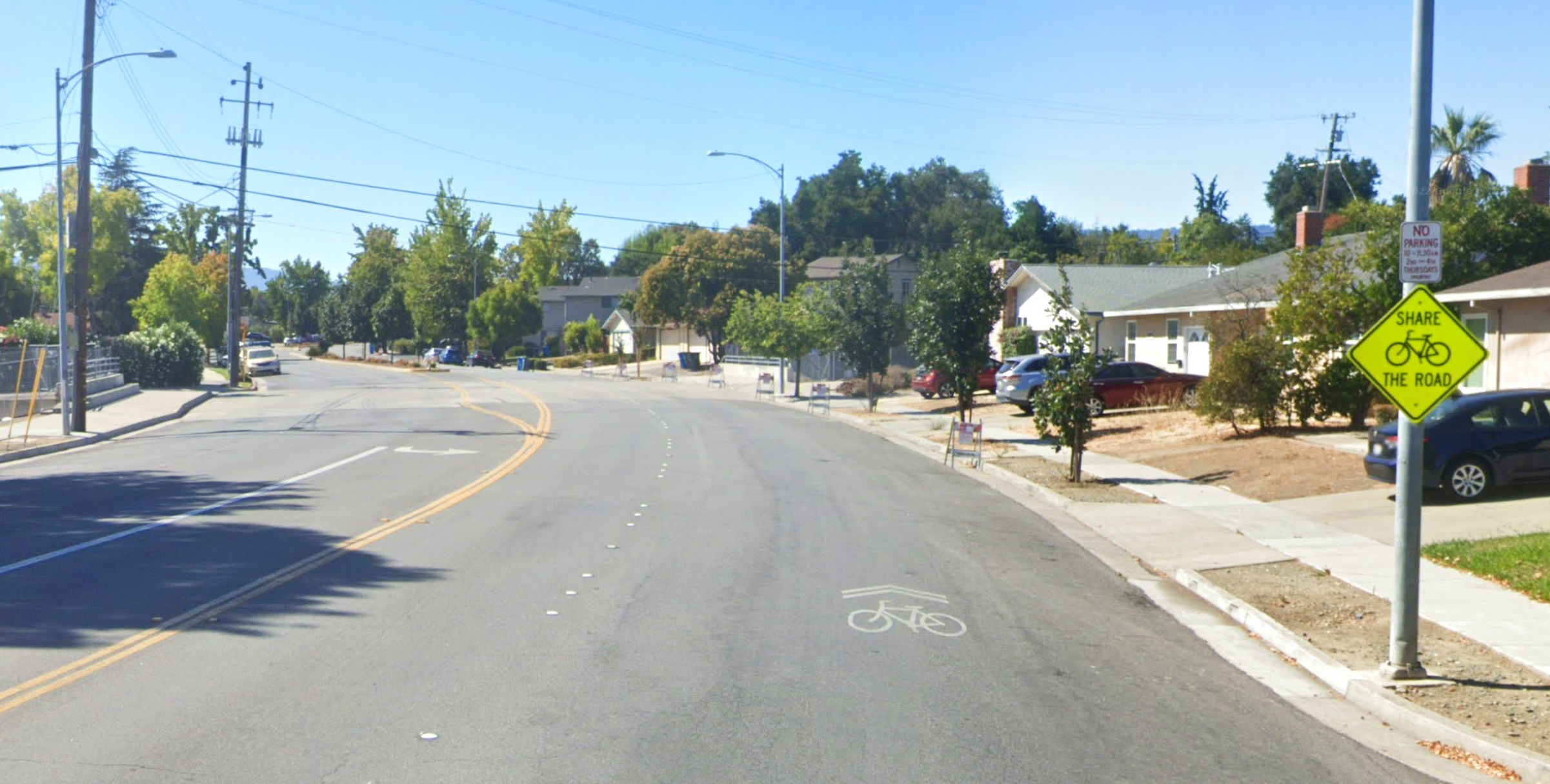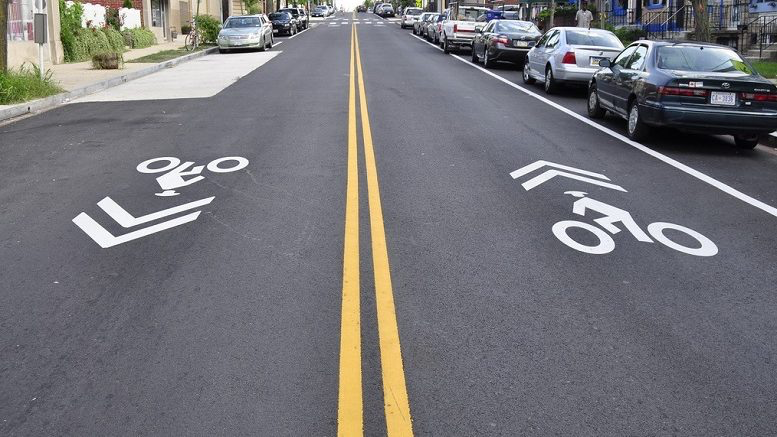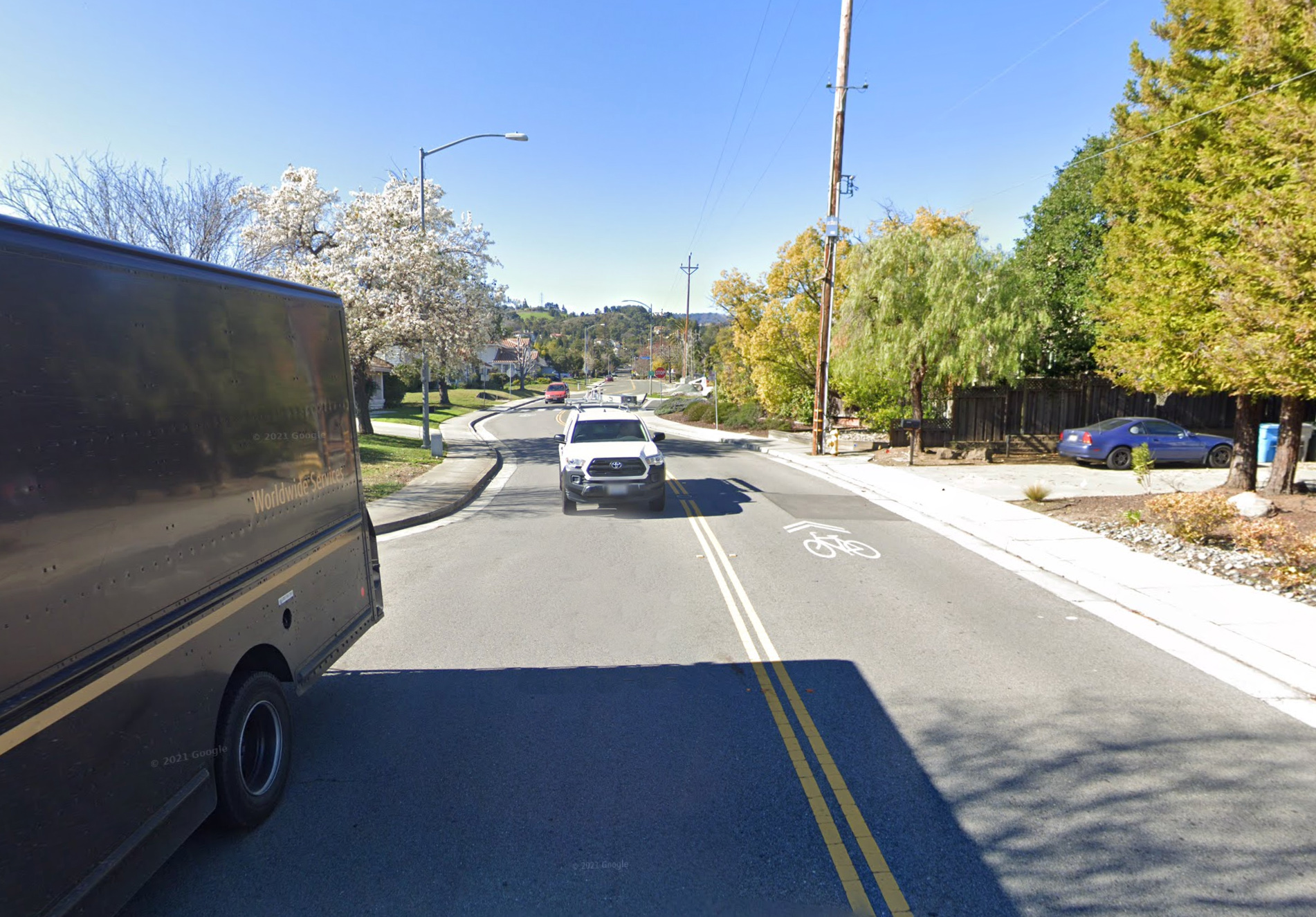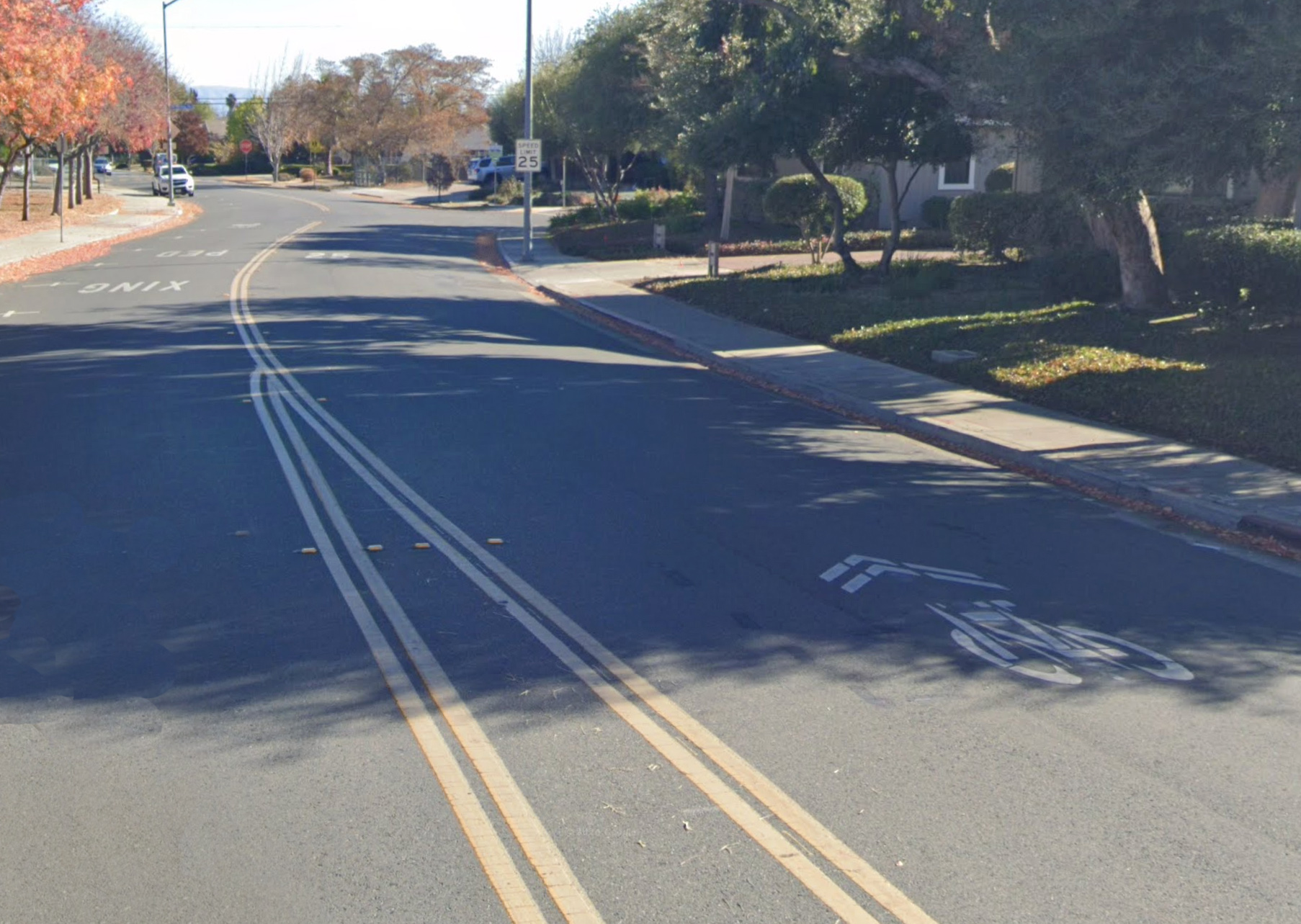
Miller/Wolfe Avenue in Cupertino is 5 lanes, has a 35 mph speed limit, and has sharrows as a bike facility. Cyclists are rarely seen riding on it, as it is generally considered very dangerous to do so.
In January of 2024, CalTrans declared sharrows “should be a last resort” and are not “a dedicated bicycle facility.” State Senator Blakespear followed up on CalTrans’ guidance with a new bill, SB 1216, which seeks to ban the use of sharrows on roads with speed limits above 30 miles per hour. Although the state is moving in the right direction, it must consider restricting the use of sharrows more broadly, because they do not make streets safer for bicyclists.
Sharrows — also Class III bike lanes or bike boulevards — are paint which indicates that bicycles and cars may share the road. They provide no separation between bicycles and cars, and no guidance as to how drivers can keep bicyclists safe. According to a study by researchers at the NYU School of Medicine, sharrows are correlated with a 94% increase in severe injuries when compared to having no bicycle facilities at all. Another study found that implementing sharrows causes no increase in bicycle ridership, but leads to more collisions than having no bicycle facilities.

What’s a sharrow?
Sharrows tell drivers that they need to share the road with cyclists. It’s a clear signal to vehicles that bikes will be riding down the center of the lane that cars drive in. Many drivers do not understand what these markings mean, so honking of horns and angry gestures can sometimes result when a bike does what is correct and legal. Because of the common lack of knowledge by drivers about what these mean, less experienced riders should use extra caution.
Although sharrows are popular because of how cheap they are, that low price comes at a steep cost in safety and lives.
California departments and legislators now appear to be recognizing the dangers sharrows pose. The most recent CalTrans memo includes updated guidance for Complete Streets programs, including extensive notes advising against sharrows.
According to CalTrans, sharrows are only appropriate “for limited distances, as an interim measure” and should be used only in low-volume, low-speed areas.

Rainbow Drive only has a 25 mph speed limit, but because it is on a route with a lot of school traffic , sharrows are still not safe for cyclists.
CalTrans also recommends that sharrows only be used on roads with speed limits below 25 MPH, and which see fewer than 2000 cars per day on average. For comparison, the average daily traffic on Wolfe Rd. during the last conducted count — over 10 years ago — was 50,000 cars per day. Cupertino and other California cities must comply with CalTrans guidelines, but may treat recommendations as optional.
Although CalTrans advocates against sharrows, it has not legally implemented a maximum speed limit for their use. State Senator Blakespear’s bill, SB 1216, would fill that gap by prohibiting new sharrows on roads with speeds above 30 MPH. The bill would also prevent the California Transportation Commission from funding plans for sharrows on roads with speed limits above 25 MPH.
Although a positive step, it is unfortunate that SB 1216 would create weaker requirements than CalTrans’ recommendations. Given the evidence that sharrows cause more accidents, and more severe injuries, allowing their presence on roads with speeds of up to 30 MPH invites more accidents and more fatalities.
SB 1216 is currently on its final reading in the State Assembly before it goes to a floor vote. If passed by the Assembly, it will move on to Governor Newsom for his signature or veto, the final step before it becomes a law or exits the legislative process.

Pacifica Drive near the library which has sharrows is heavily used, as it connects to the protected bike lanes on Pacifica.
California’s steps towards restricting sharrows are promising for bicyclists. Nevertheless, local governments must look into providing legal force to CalTrans’ recommendations for sharrows. They should only be used as a last resort, for small interim areas, on roads with speeds below 25 MPH and with very low daily traffic. Otherwise, we risk presenting a small painted design— that the evidence shows will likely increase accidents— as a useful bicycle facility.
The information in this article is solely the opinion of the author and Walk-Bike Cupertino and does not reflect the opinions of any other organization or entity. For more information, contact WBC at info@walkbikecupertino.org.
